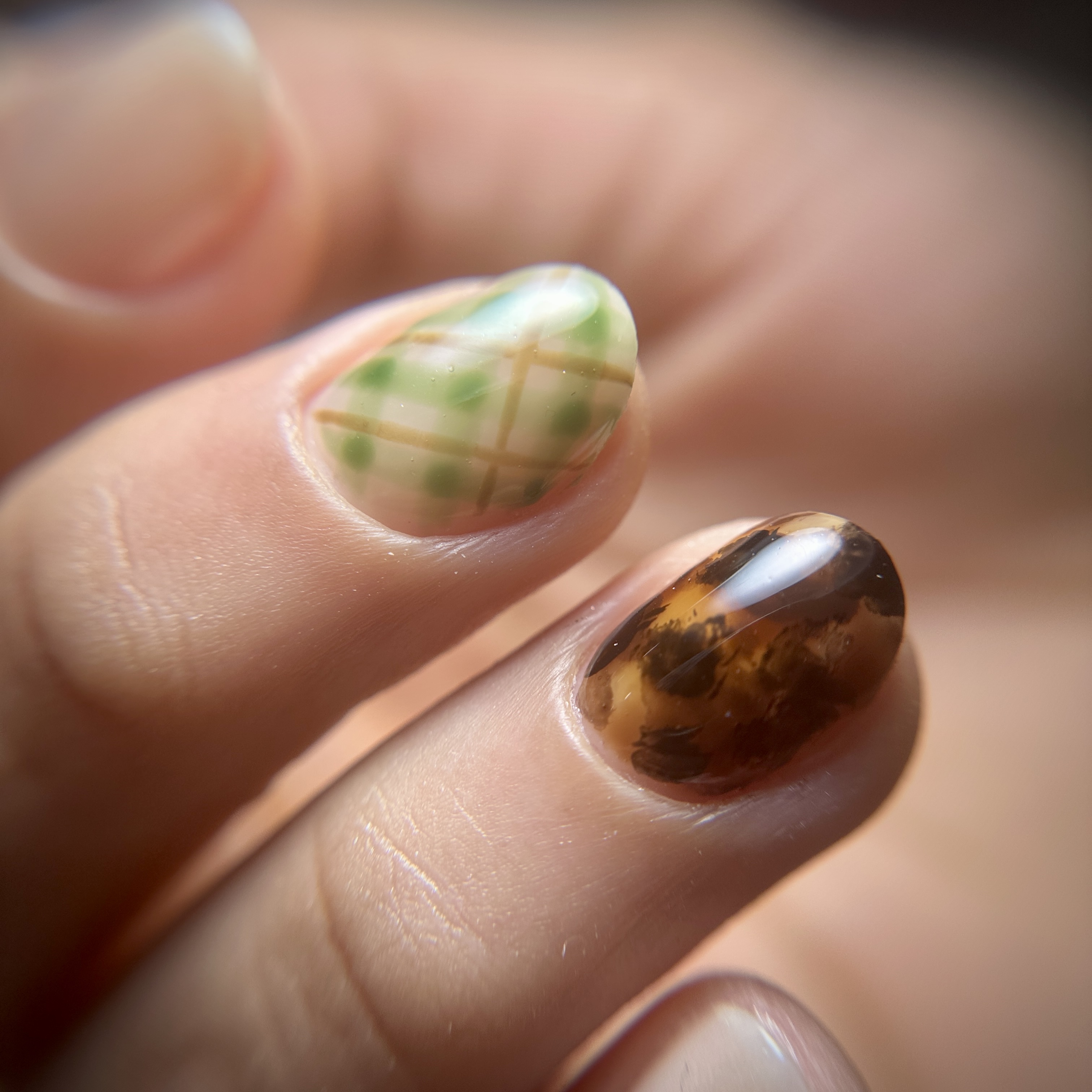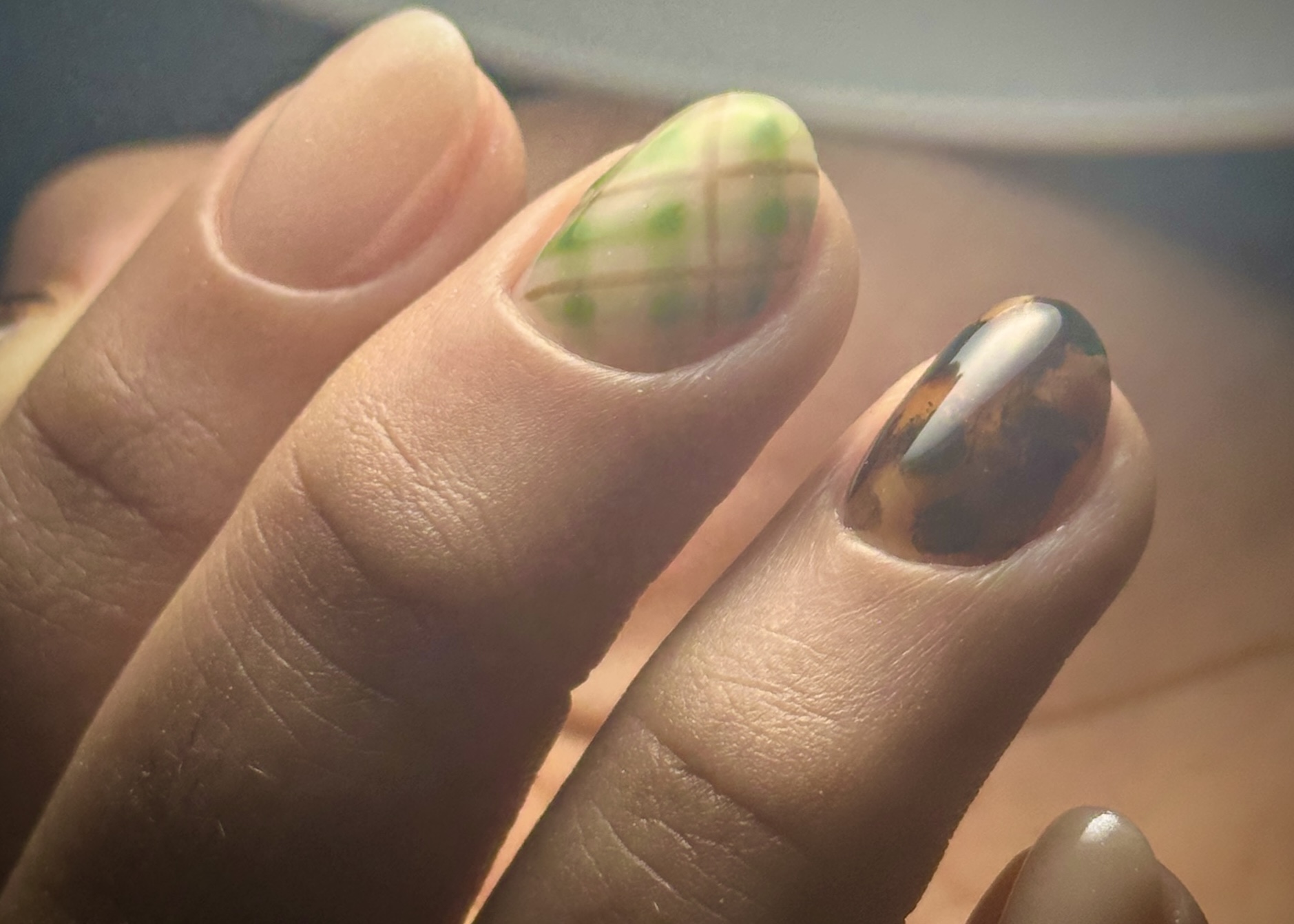The Truth About Russian Manicures: A Nail Artist’s Perspective
Simone Wallace on Nov 4th 2025
The Truth About Russian Manicures: A Nail Artist’s Perspective
When I first heard about Russian manicures, I’ll admit—I was nervous. The idea of making precise cuts so close to live skin is intimidating. I know how it feels to accidentally nick that sensitive area, having been on both sides of the nippers. But curiosity won, and I decided to step outside my comfort zone and attend a live demo. I wasn’t disappointed. My perspective on Russian manicures has since evolved into a much more informed and open appreciation for the technique.
Attending a Live Demo
I had the opportunity to attend a demonstration by Carolina Nigaglioni, owner of Care Nail Studio in Fort Worth, Texas. Carolina has specialized in Russian manicures and structured gel overlays for more than five years, continuously investing in advanced education across the U.S. Her passion for detail speaks for itself—her portfolio is flawless, and her ability to guide others through her techniques is inspiring.

If you ever visit Care Nail Studio, you’ll find a calm, relaxing atmosphere designed with clients in mind. (Shameless plug: their cuticle oils are incredible—fresh, light, and nothing like that greasy “vegetable oil” texture most of us hate!)
The Online Buzz
There’s no shortage of debate about Russian manicures online. Are they safe? Dangerous? Even legal? TikTok, YouTube, and Reddit are full of both success stories and horror stories.
Video clips can make the process look intense—especially when you see an e-file so close to the skin. But after watching it in person, I wanted to clear the air and share what really goes on. While I’m not yet trained to perform this service myself, I’ve learned enough to help clients understand whether this method supports their nail goals or not.
What Exactly Is a Russian Manicure?
A Russian manicure is a type of dry manicure—meaning there’s no soaking or cuticle softener involved. What sets it apart is the meticulous cuticle preparation done entirely with an e-file.
Dry manicures aren’t new, but most nail techs don’t spend 45 minutes to an hour focusing solely on cuticle work. Russian manicures do. The e-file removes dead skin from the nail plate, sidewalls, and the area beneath the proximal nail fold (the part most people call the cuticle, though technically it isn’t). Removing this dead skin improves product adhesion and prevents premature lifting.
Technicians often start by applying talc-free baby powder to highlight the dead skin. Then, with gentle precision, they work the e-file under the nail folds and along the edges. Carolina demonstrated how she makes two passes, brushing away debris after each one to see exactly where to refine. This is why the process takes so long—it’s about small, careful movements and restraint, not speed.

When done correctly, you can clearly see what’s living skin and what’s safe to trim with scissors or nippers. Even if the final cuts aren’t perfect, the technician may return with the e-file to smooth and buff for a clean finish. Despite what social media sometimes shows, a Russian manicure does not have to leave you with red, irritated cuticles.
What Medical Experts Say
Some dermatologists express concern about Russian manicures, often due to misunderstandings about the technique. For example, in What Is a ‘Russian Manicure’—And Can It Affect Your Health? by Sarah Garone, reviewed by Dr. Susan Bard, one doctor describes the process as “aggressive.”
In reality, skilled nail artists work with extreme precision—not aggression. Scissors and nippers are used only on clearly identified nonliving skin after e-file prep. When performed properly, the procedure is controlled, gentle, and effective.

Another article, Nail Trends That Challenge Clinical Diagnosis, by Dr. Zoe Diana Draelos, explains this balance well. The main risks come from inexperience and poor sanitation, not the method itself. As with any nail service, the safety and outcome depend on the technician’s training and hygiene standards. Clients also play a role by sharing relevant health information that might affect the service.
What Can Go Wrong With Russian Manicured Nails?
The biggest risk in a Russian manicure comes from tampering with the matrix, the part of the nail responsible for generating the nail plate. When the matrix is injured, it can lead to nail disorders that may be permanent.
Think of your cuticles as the natural seal that closes off the space between your nail plate and live skin, protecting the matrix from bacteria and fungi. When that barrier is aggressively removed or compromised, the nail becomes vulnerable to infection. Symptoms of an infected finger can include redness, swelling, pain, or pus. In these cases, a nail technician must refuse service and refer the client to a physician.
The general term for nail deformities or diseases is onychosis, which is similar to nail dystrophy. More specific disorders associated with improper Russian manicures include paronychia, onychia, and onychomadesis.
In the article Acute Paronychia and Onychomadesis after a ‘Russian’ Manicure: A New, Aggressive, and Destructive Form of Manicure for Dermatologists to Recognize, one client developed paronychia (a bacterial infection with swelling and pus) and onychomadesis (separation and falling off of the nail plate). The client’s ring finger became red and painful, and her nail detached from the cuticle area. With medication, the infection healed, but the nail had to regrow to replace the detached portion.
It’s important to note that this study focused on one individual case. While it highlights serious potential risks, a single report isn’t enough to represent everyone’s experience. Broader research—including interviews with dermatologists and more patient data—would help define the true range of risks associated with Russian manicures.
How to Avoid Russian Manicure Mistakes
Going back to the live demonstration I attended at Care Nail Studio with Carolina, I learned a few valuable takeaways that the nail community might agree on when approaching such a detailed and technical service.
1. Take Your Time
For beginners, this manicure can take 45 minutes to an hour just for prep work. It’s better to go slowly than to rush and risk overfiling or cutting live skin. Carolina emphasized that communicating this to clients helps manage expectations. A good habit is to push back the cuticles before each major step—base coat, polish, and top coat—to prevent flooding and product buildup.
2. Keep Everything Clean and Sterile
This should go without saying—never compromise sanitation. Every nail tech learns that cleaning, disinfecting, and sterilizing tools are non-negotiable. Treat each implement as if it carries bacteria, and always avoid cross-contamination. Clean hands, clean tools, clean area. Always.
3. Take Breaks Between Deep Services
Just like with any manicure, once your nails are properly prepped, maintenance becomes easier. Deep-clean Russian manicures don’t need to be performed at every visit. You can alternate between a full Russian manicure and a lighter dry manicure to maintain healthy cuticles without overworking the skin. This also allows your nail plate and cuticle area time to recover.
Final Thoughts
Would I get a Russian manicure? Absolutely—but not every time.
My skin is sensitive, and I know my cuticle area doesn’t tolerate heavy poking or e-filing often. Still, I love the flawless, long-lasting finish a Russian manicure provides when done right.
The truth is, Russian manicures aren’t inherently dangerous—they’re just extremely detailed and require skill, patience, and precision. The problems arise when people rush, skip sanitation, or try to mimic the process without the right training.
When performed properly, Russian manicures offer stunning results: clean cuticles, improved gel adhesion, and a sleek, polished finish. As more nail artists get educated on proper technique and hygiene, the beauty community can continue learning how to perform and enjoy these manicures safely.
The key takeaway? Knowledge and trust matter most.
Educate yourself, choose your nail tech wisely, and don’t hesitate to speak up if something feels off. Your safety always comes first—because beautiful nails should never come at the cost of your health.

